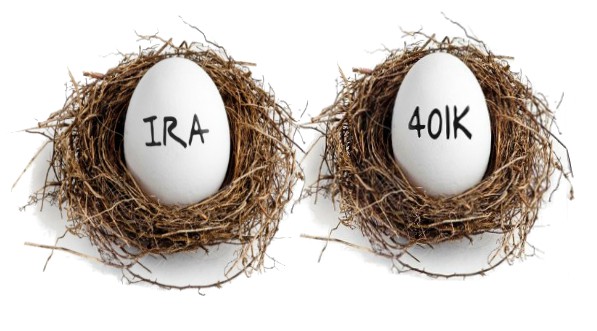
Nobody likes a job that’s only halfway done, but partial progress often is better than none at all.
When it comes to managing money, many Americans still aren’t meeting their savings objectives, or they’re mismanaging their investments or skipping opportunities involving Social Security.
People sometimes fail to get going or complete the task, because they view the full goal as unachievable. In these cases, going halfway might be more realistic. These are some situations where getting 50% of the way there could be better than doing nothing.
Build half your cash reserves
Financial planners routinely recommend compiling a cash reserve equal to three to six months of living expenses to meet unexpected costs like a car-repair or air-conditioning bill. But that’s clearly way too much for many people to achieve.
With average U.S. household expenses of around $60,000 a year, according to the Bureau of Labor Statistics, a cash balance of three to six months would imply saving $15,000 to $30,000. If that’s too daunting, try cutting it in half to 1.5 to three months, or $7,500 to $15,000.
Savings can include various accounts — cash on deposit at the bank, in money-market brokerage accounts and elsewhere. So, too, for money that you accumulate in health savings accounts or HSAs, said John Campbell, senior wealth strategist for U.S. Bank Private Wealth Management in Chicago.
HSAs, which are available to employees utilizing high-deductible health insurance plans through work, are a flexible, tax-efficient way to save for a range of medical expenses.
Contributions go in on a pre-tax basis, and earnings build up tax-sheltered for later use, much like a Roth Individual Retirement Account. Given that medical expenses often are what push people over the edge, it can be smart to utilize HSAs as a savings solution.
Wait until 66 to collect Social Security
When it comes to claiming Social Security retirement benefits, recipients can start as early as age 62, wait until 70 or start within that range, meaning they have an eight-year window to act. Each year you wait, your benefits increase. The flip side is that you’ll be giving up payments in the meantime.
At any rate, most people start taking Social Security within the first few years of reaching 62. Hardly anyone waits until age 70, when benefits are maximized.
There can be sound reasons to claim Social Security sooner — if you can’t find a good job in the meantime and need the income, for example, or if you don’t expect to live into your 80s, 90s or beyond.
But even if you can’t wait until 70, how about splitting those eight years in half? Claiming around age 66 is a compromise strategy that would put you near “full retirement age,” the time when you receive “unreduced” benefits, as the Social Security Administration puts it.
For most people now in the workforce, full retirement age is around 66 or 67. If you can delay further beyond that, your benefits will rise by 8% each year you hold off.
Go halfway in the stock market
Over time, the stock market not only appreciates handily but drastically outperforms bonds, cash and other conservative investments. That’s why, logically, it’s often smart to invest as much as you can, right away.
The problem is that it’s emotionally difficult to do that. Stock prices occasionally drop sharply, and these downdrafts can be enough to prod some investors to pull out all their money, usually near a cyclical low, which often is the worst move.PAID STORY FROM DISCOVERWhy it’s important to have a sense of community in the LGBTQ space
That’s why many advisers suggest taking a balanced investment approach, putting roughly half your investment dollars in stocks/stock funds and the rest in bonds/bond funds and cash instruments.
Even with a 50-50 split between stocks and bonds, which is fairly conservative, you could fare well over time. This portfolio allocation would have generated an average annual return of 9% including reinvested dividends, over the long haul, according to Morningstar/Ibbotson, which examined a nearly nine-decade stretch ending in 2014.
A full-stock portfolio would have fared better, rising 12% yearly on average, but it also would have lost money more often and would have subjected investors to sharper declines. One investing key is staying put for the long haul, and a 50-50 mix might make it easier to achieve that
Put half your retirement funds into Roth accounts
If you have a lot of money in Roth IRAs or Roth 401(k) options, give yourself a pat on the back.
Money withdrawn from these accounts generally comes out tax free in retirement (after age 59 1/2). It’s also not subject to required minimum distributions later in retirement (after 70 1/2), as is the case with regular IRA and 401(k) money. That means you have greater flexibility in timing withdrawals.
But it’s not always easy to contribute to Roth accounts because you won’t get a front-end tax deduction, as are typically available on traditional IRA and regular 401(k) accounts. As a compromise, consider splitting your retirement contributions between regular (taxable) and Roth (untaxed) accounts.
In fact, when ordinary income-tax rates are fairly low, like now, Roth contributions can make more sense, Campbell said. That’s because the size of the tax deduction you’d give up, by not going the traditional-IRA route, is smaller.
“You definitely want some flexibility” in using both types of accounts, he said.
Both types of accounts have eligibility restrictions centered largely around income, and you would need to have work-related earnings to contribute.
Cut your debt payments in half
This goal might be more feasible than trying to pay off all your debts at once or within a few years. Refinancing mortgages and other loans at lower interest rates could be one option, especially now that rates are dropping again. And if you must borrow further, take out smaller loans if possible.
Auto loans are a case in point. Yes, interest rates are low, but vehicles are depreciating assets, and you probably don’t want to lock in terms of 72 or even 84 months.
“If you’re looking at 72 months or longer, you’re probably buying more car than you can afford,” said Mike Sullivan, a consultant with Take Charge America, a Phoenix credit-counseling firm. With loans that long or longer, you risk having to continue making payments well after the vehicle has lost most of its value.
New vehicles on average sell for about $33,000, according to researcher J.D. Power. Labor Day weekend is one of the peak shopping periods.
Sullivan also cautions that dealer financing often is more costly than shopping around for a vehicle loan. But if you feel you must take the dealer-loan option, consider refinancing it later through a bank or credit union, he suggests.
With credit cards, Sullivan suggests paying off your most costly cards first, then moving to those with the next highest interest rates. Another option is to pay off the lowest-balance loans first, so that you feel like you’re making progress psychologically.
Debt, rather than a lack of income, is one reason a lot of middle-class people complain of feeling cash-strapped.
One in six households earning $100,000 or more said they would have trouble meeting even an unexpected $400 expense, according to a 2017 Federal Reserve study. These households typically do have more than $400 in assets. But because of debt burdens, they often don’t feel they can afford new expenses.























